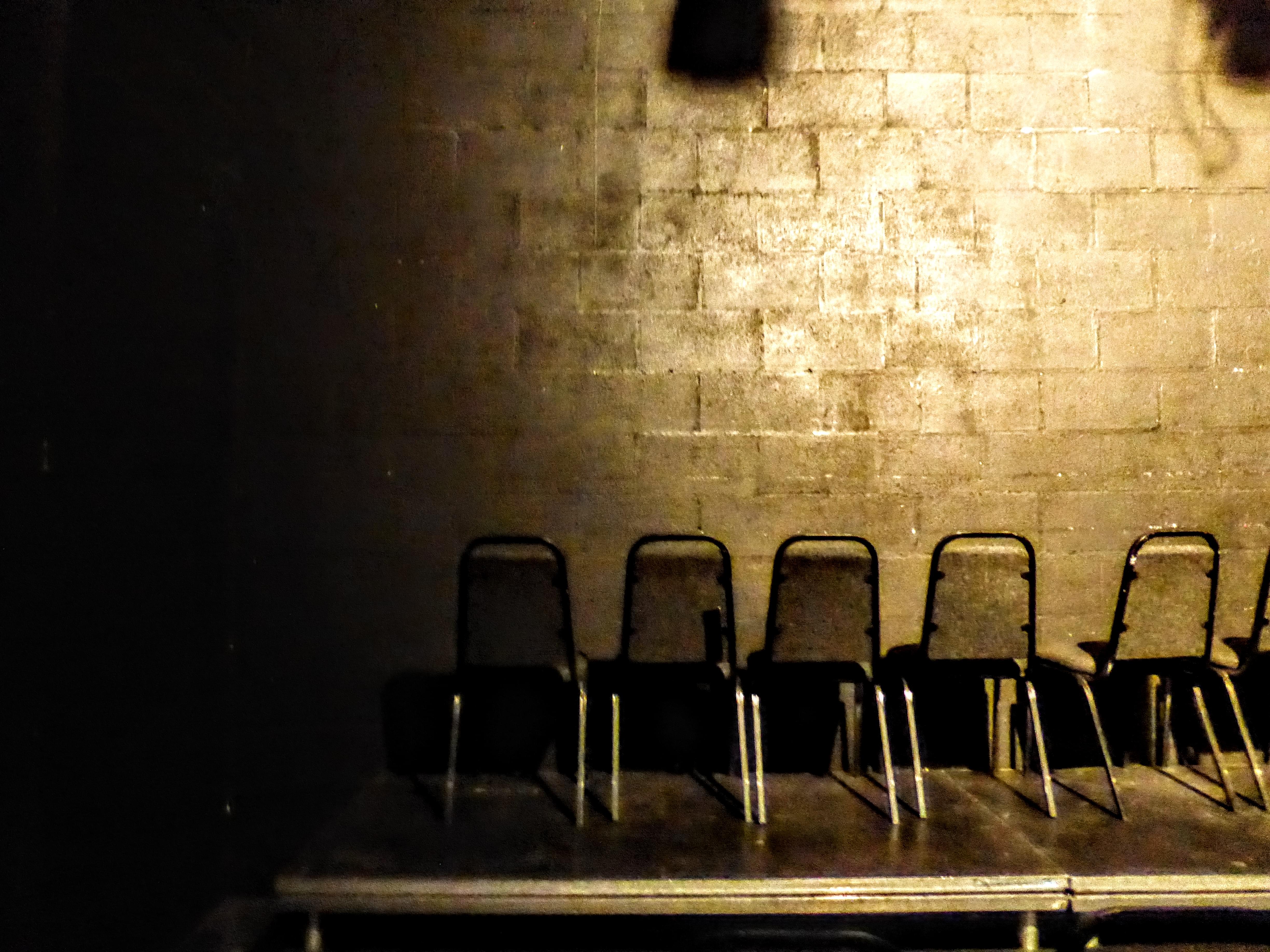Michael West’s first work, ‘A Play on Two Chairs’ premiered in DU Players Theatre in 1989, when the playwright was still a student at Trinity College. This week, the play, now directed by Max Kane with Anna McLoughlin, is staged again in its original location, each weekday at 1 pm. As part of the Trinity Arts Festival, Friday’s show will be free.
If you’re looking for a stimulating way to spend your lunch-break, ‘A Play on Two Chairs’ is a wise choice. In only forty-five minutes, “He” (Joe McSweeney) and “She” (Signe Lury) will provide you with enough pantomime and energy to lift your spirits until the end of your day.
Indeed, the play takes off at full speed. During several minutes, the performers do not exchange a word and interact only by means of their two eponymous chairs. By not only being on the chairs but also under them, around them and behind them, McSweeney and Lury suggest an extravagantly large number of situations – dance, animal life, fighting – in a tiny period of time.
Soon, the play stops to be mute but remains strikingly high-paced. Ten vignettes come one after another without any downtime, making ‘A Play on Two Chairs’ a performance impossible to sum up.
The show is often presented as an enduring war of sexes, during which “He” and “She” embody a series of male and female stereotypes: a male psychoanalyst refuses to listen to his female patient when she does not talk about her “sexual repression”; a man who is dictating a letter to the woman which discusses the most effective way of conveying your love by mail; finally, while “He” seems to be dying of “She”’s expert stabbing and “She” promises him that he is soon going to “be far away”, he finds the miraculous strength to come back to life and declares “No I’m still here”. Then, the two actors reenact the choreography the play began with, but it is now explained by the preceding dialogue.
In spite of being very physical, ‘A Play on Two Chairs’ eventually conveys the idea that words possess their own power and, beyond their diversity, all its successive sketches can be interpreted as different and erratic ways to strengthen and refresh our often hackneyed language.







